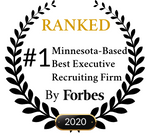Zero in on these Critical Areas for Fast, Effective Onboarding
You’ve probably seen the studies linking employee retention to new hire experience. If you haven’t, you might start with this one by the SHRM Foundation. In it, you’ll find a compelling argument for re-investing in your onboarding process. Whether your new hire is fresh out of school or a seasoned veteran, they need to experience a guided, intentional introduction to your organization, their new team, and their role within it. And if you thought that you could save a few dollars by just “buddying them up with Betty Lou over here because she really knows the ropes…” well… no, you can’t.
Those first few months on the job (notice that I said months, not days or weeks) set the tone for an employee’s experience – and expectations – of their career prospects with you.
So you know that onboarding is important. But what can you do if your company isn’t quite there yet? You can create your own employee welcome and onboarding procedures, focusing on these five critical areas of employee engagement and performance: Values, Goals, Roles, Processes and Relationships.
1. Values
The first connection point you need to establish – and maintain – for your new hire is with the organization itself. Hopefully, your new team member is already familiar with your vision and values because you incorporated them into all of your recruiting and interviewing messages. For their first day on the job, take this message several levels deeper. Start with a welcome letter, signed by you, your manager and, ideally, your CEO. In the letter, draw a clear link between the new employee’s role and the success of the organization. Be sure to include your vision, values and mission statements as well as important company policies. Run it all by your manager and your HR department before sharing it. And make sure that the tone of your packet is warm, fun and above all, actually welcoming.
2. Goals
There are few things as lethal to a new career than the feeling of being unaware of – or disconnected from – the actual performance goals of the organization. Everybody needs to know what they’re working toward. Start by explaining the annual, quarterly and monthly goals of your department. Follow that with clearly defined goals at the individual level. Don’t focus solely on results, especially for the first six months. Really zero in on the activities and efforts you need to see, as well as the attitudes that are expected within the team. Above all else, make the individual level goals S.M.A.R.T. (Specific, Measurable, Achievable, Measurable and Timebound). Then maintain an unwavering commitment to weekly one-on-one meetings during which you review progress against goals. This one commitment will put you ahead of most managers. It gives you and your new employee a clear, shared roadmap for getting started and staying in sync on progress. Your new hire will love you for saving them the agony of guessing where what they’re supposed to do and where they stand.
3. Roles
Welcome lunches are nice (see below). But please don’t confuse the warm fuzzies with necessary information about who does what and who’s in charge of what. Particularly if this is a newly created position, have you taken the time to figure out how their role will fit alongside the roles of everyone else? Have you told everyone on the team? For the team to be fully functional, productive and successful, everyone on board needs to grasp the team structure, its key deliverables, and what qualifications each person brings to the team.
4. Processes
“At my old job, we did it this way…” New hires bring old habits. It’s inevitable. And that’s not always bad. Maybe your new hire has a better way of doing a few things. But make no mistake, there needs to be agreement between you and the team and among the team members on what processes will be used going forward. How are problems attacked and solved? How are meetings scheduled, decisions made and information communicated? How are conflicts resolved? See what I mean? There is much to negotiate and settle between all parties before you set them loose on a new project.
5. Relationships
There’s a commonly held belief that often, interpersonal conflicts, sniping and disengagement are rarely the result of “personality conflicts” as much as they’re the result of the team’s confusion about the first four components I’ve outlined above. I, myself, strongly believe that. (That’s why it’s listed last.) But above and beyond making sure you’ve been clear about the top four, you will be well served to give the interpersonal relationships a little jump start. Do have that welcome lunch. But don’t stop there. Share brief bios of all team members with your new hire that include how long they’ve been with the company, their role within the organization, a quote from them on what they value most about the organization, and one or two hobbies or outside interests. Don’t try to force friendships but do build bridges based on shared goals, mutual respect and true collaboration.
What elements of your onboarding process have you found to be key? Leave a comment and share your experience.








